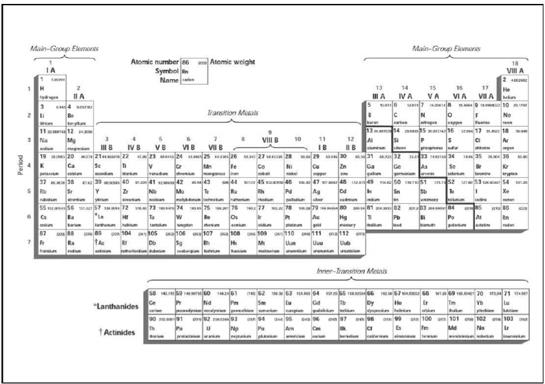Physics and ChemistryChemical Elements |
Who developed the periodic table? |
Dmitry Ivanovich Mendeleyev (1834–1907) was a Russian chemist whose name will always be linked with the development of the periodic table. He was the first chemist to really understand that all elements are related members of a single ordered system. He changed what had been a highly fragmented and speculative branch of chemistry into a true, logical science. His nomination for the 1906 Nobel Prize in Chemistry failed by one vote, but his name became recorded in perpetuity 50 years later when element 101 was called mendelevium.
According to Mendeleyev, the properties of the elements, as well as those of their compounds, are periodic functions of their atomic weights (in the 1920s, it was discovered that atomic number was the key rather than weight). Mendeleyev compiled the first true periodic table in 1869 listing all the 63 (then-known) elements. In order to make the table work, Mendeleyev had to leave gaps, and he predicted that further elements would eventually be discovered to fill them. Three were discovered in Mendeleyev’s lifetime: gallium in 1875, scandium in 1879, and germanium in 1896.
There are 95 naturally occurring elements; of the remaining elements (elements 96 to 109), ten are undisputed. There are approximately more than 50 million chemical compounds, produced from the elements, registered with Chemical Abstracts as of 2009.

